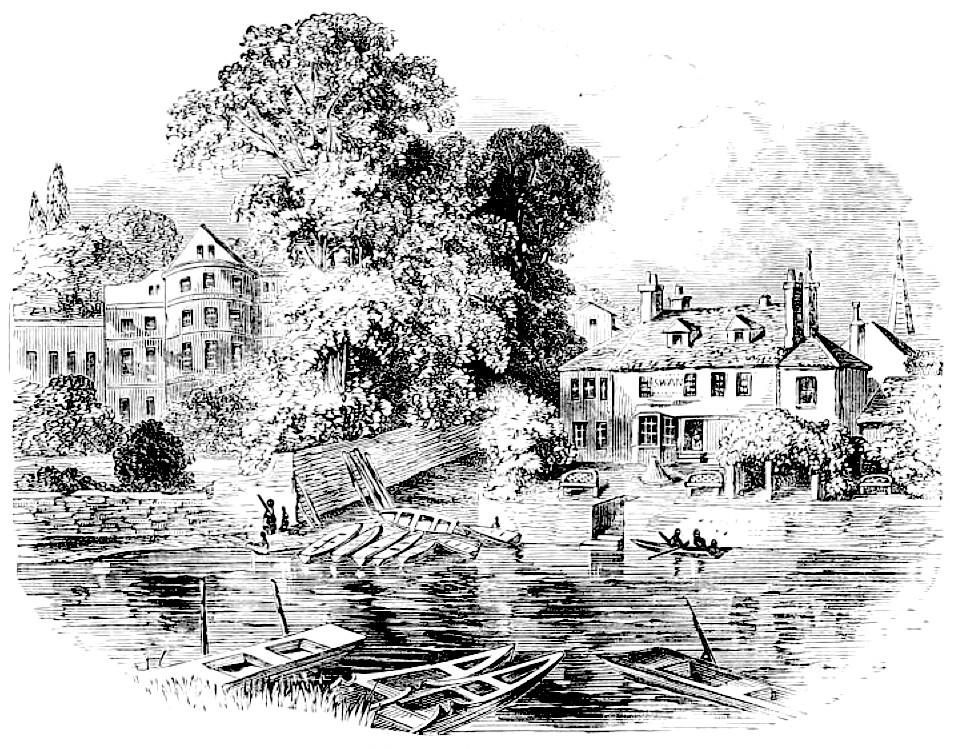Photographs, scanned image and text by the author. You may use these images without prior permission for any scholarly or educational purpose as long as you (1) credit the photographer and (2) link your document to this URL or cite the Victorian Web in a print document. [Click on the images to enlarge them.]

The Swan, Summer Road, Thames Ditton, Surrey. This complex range, fronting Summer Road and backing on to the Thames, is a Grade II building, described in the listing text as "Two houses, linked and extended to form public house. Early C18 to left end and right of centre, C19 link between to left of centre and further extension to right end."

Although Mrs S. C. Hall says that the inn is "'famous' ... only in the records of the angler" (316), she prints a poem about it by writer and composer Theodore Hook (1788-1841), who rhapsodises over it as a "snug inn" in "sweet Ditton" (317), and illustrates it with the charming sketch of its Thames frontage seen on the left below. However, its main interest for some will be another literary association: the poet Thomas Hood often used to stay here, and is reputed to have written his well-known social protest poem, "The Song of the Shirt," whilst in residence (Mee 293).


Left: "The Swan at Ditton" from The Book of the Thames, 316. Right: The Thames by the The Swan today.
References
Hall, Mr and Mrs Samuel Carter. The Book of the Thames, from Its Rise to Its Fall. 1859). Republished, 5th new edition. Teddington: Charlotte James, 1980.
Mee, Arthur, ed. The King's England: Surrey: London's Southern Neighbour. London: Hodder and Stoughton, 1938.
"The Old Swan Inn, Thames Ditton." British Listed Buildings. Web. 21 December 2014.
Last modified 21 December 2014